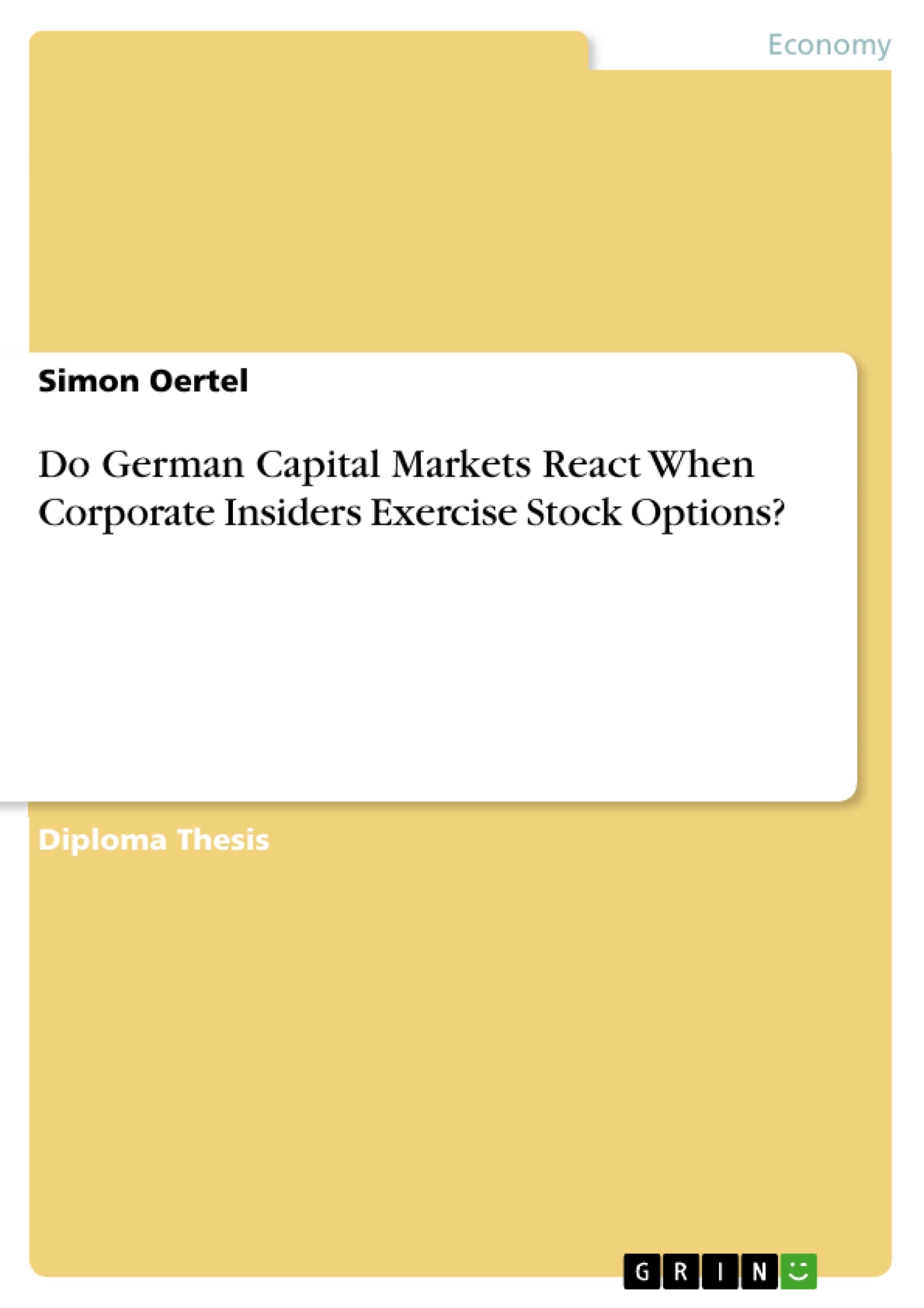Trading by corporate insiders in their company’s stock and the impact of insider trading on capital markets has long been a field of interest for academics as well as policy makers and regulators who aim to guarantee the effectiveness and fairness of capital markets. Outside investors are following corporate insiders’ trading behavior closely and might intend to mimic their trading strategies, trying to realize abnormal profits.
Newspapers and information services regularly report insider trading activity.3 The term insider trading will generally be used to describe trading by corporate insiders. It does,however, not necessarily imply illegal behavior. Corporate insiders might trade for a multitude of reasons which do not have to include the illegal exploitation of inside information.
The definition of corporate insiders might differ from country to country and
their corresponding regulations. The differences in the definition of corporate insiders between the US, the UK, and Germany will later be explained.The academia has provided a multitude of papers on insider trading over different decades (e.g., Jaffe (1974), Seyhun (1986), Rozeff and Zaman (1998), and Lakonishok and Lee (2001)) and research has been conducted to analyze the effects of insider trading on different countries’ capital markets (e.g., Jeng et al. (2003) for the US, Fidrmuc et al. (2006) for the UK, Eckbo and Smith (1998) for Norway, and Betzer and Theissen (2005) for Germany).
The majority of research publications, however, excludes stock option exercises from the analysis. The reasons for the exclusion of stock options are versatile. Early papers on insider trading exclude the exercises due to the complexity of identifying reasons for the exercise of stock options4 or the difficulty of getting price information associated with option exercises.5 Rozeff and Zaman (1998), Jeng et al. (2003), and Fidrmuc et al. (2006) do not give any specific reasons but exclude stock options from their sample as well. Other studies retain the sale of the shares in their sample when stock options are exercised and the acquired shares are sold immediately.6
Nonetheless, a new strand of literature has emerged that specifically focuses on the exercise of stock options by corporate insiders. Carpenter and Remmers (2001) pioneer in this field with their research on inside information related to the decisions by corporate insiders to exercise their stock options.
Inhaltsverzeichnis (Table of Contents)
- 1. Introduction
- 2. On Insider Trading
- 2.1 Review of the Literature on Insider Trading
- 2.1.1 Evidence from the United States
- 2.1.2 Evidence from Europe
- 2.2 The Case of Germany
- 2.2.1 The Rise of German Financial Regulation
- 3. Stock Options and how Corporate Insiders Exercise
- 3.1 About Stock Option Plans
- 3.2 On Recent Empirical Findings
- 3.3 Hypotheses Development
- 4. Data and Methodology
- 4.1 Data
- 4.2 Descriptive Statistics
- 4.3 Methodology
- 5. Empirical Results
- 5.1 The Reaction of German Capital Markets to Insiders' Stock Option Exercises
- 5.2 Unbiased Analyses of Corporate Insiders' Stock Option Exercises
- 6. Conclusion and Outlook
Zielsetzung und Themenschwerpunkte (Objectives and Key Themes)
This work examines the reaction of German capital markets to the exercise of stock options by corporate insiders. It aims to determine whether and how the stock market responds to insider trading in this specific form. The study focuses on analyzing empirical data to investigate the potential impact of stock option exercises on stock prices. Key themes explored in the work include:- The impact of insider trading on capital markets
- The specific case of stock option exercises by corporate insiders
- The reaction of German capital markets to these activities
- The methodology and empirical analysis used to evaluate the effects of stock option exercises
- The role of regulatory frameworks in influencing insider trading behavior
Zusammenfassung der Kapitel (Chapter Summaries)
- Chapter 1: Introduction This chapter introduces the topic of insider trading and its significance in the context of capital market efficiency and fairness. It discusses the motivations behind insider trading and the different perspectives on its ethical and legal implications.
- Chapter 2: On Insider Trading This chapter reviews the existing literature on insider trading, focusing on evidence from the United States and Europe. It also examines the specific case of insider trading in Germany, including the historical development of German financial regulations.
- Chapter 3: Stock Options and how Corporate Insiders Exercise This chapter provides background information on stock option plans, including their structure and the reasons why corporate insiders might exercise these options. It also discusses recent empirical findings on the impact of stock option exercises on stock prices.
- Chapter 4: Data and Methodology This chapter outlines the data used in the study and the methodology employed to analyze the impact of stock option exercises. It includes details on the data collection process, the selection criteria for the sample, and the statistical methods used.
- Chapter 5: Empirical Results This chapter presents the empirical findings of the study, examining the reaction of German capital markets to corporate insiders' stock option exercises. It analyzes the statistical results and discusses the implications of the findings.
Schlüsselwörter (Keywords)
This study focuses on the impact of corporate insider trading, particularly stock option exercises, on German capital markets. The research examines empirical data to evaluate the reaction of the market to these activities. Key concepts explored include insider trading, stock options, corporate insiders, capital market efficiency, financial regulation, and empirical analysis.- Quote paper
- Simon Oertel (Author), 2007, Do German Capital Markets React When Corporate Insiders Exercise Stock Options?, Munich, GRIN Verlag, https://www.grin.com/document/127128



